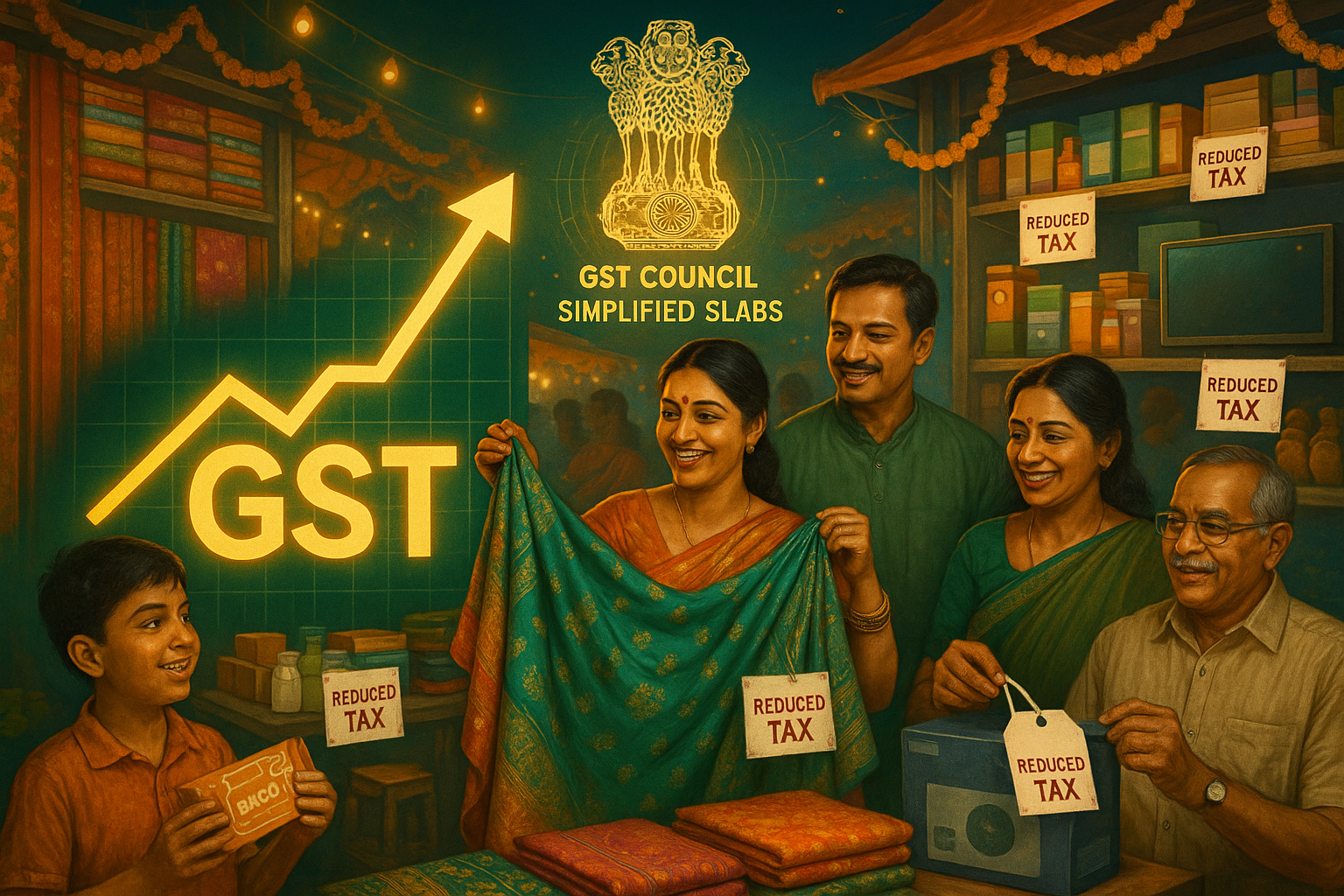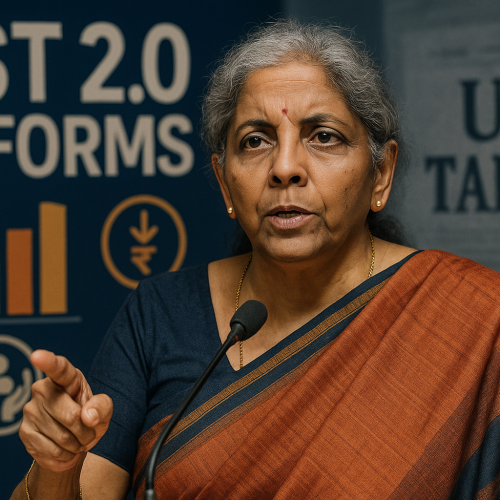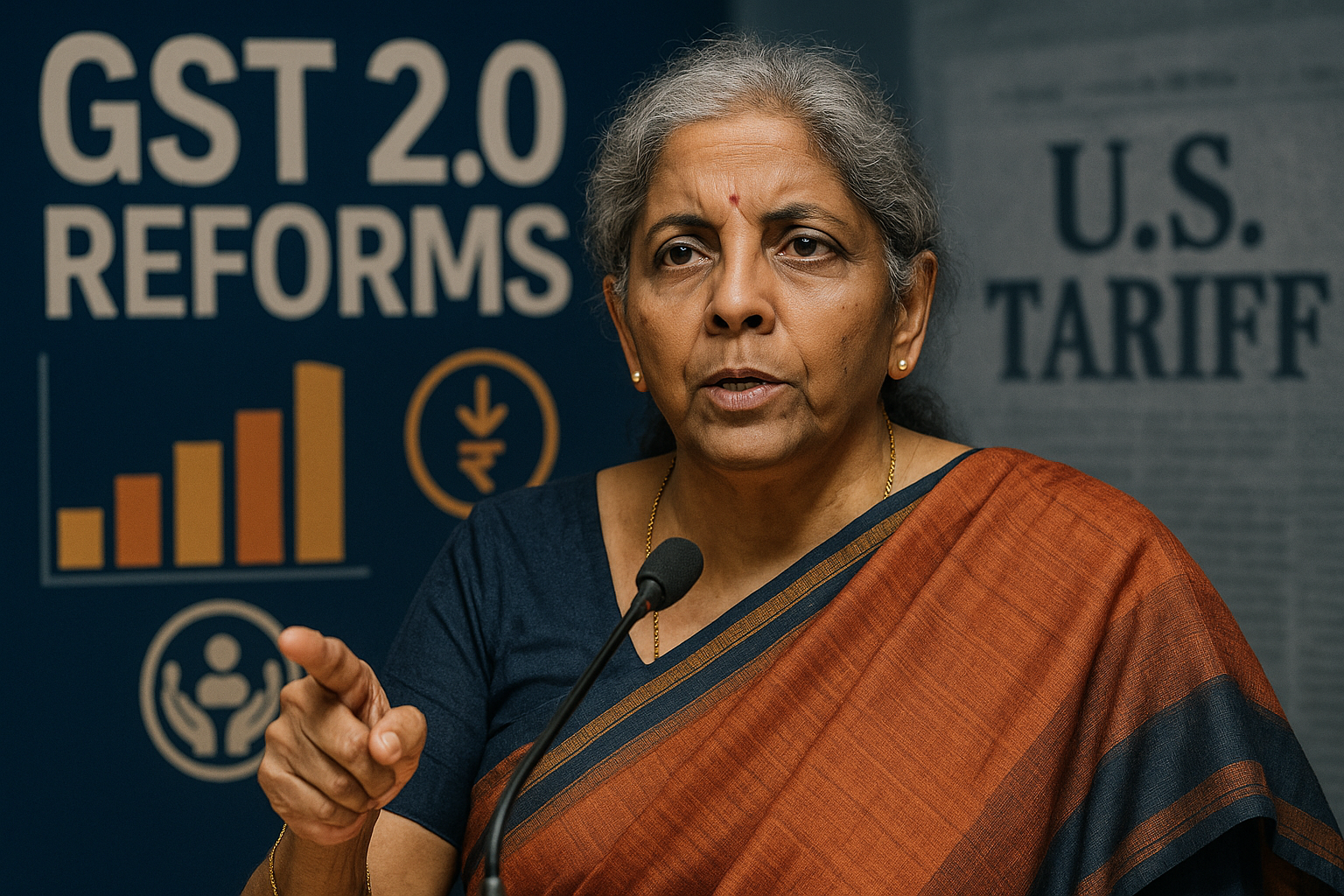The GST Council’s latest round of tax reforms is expected to act as a powerful stimulus for India’s economy by driving consumption and spurring growth. With rationalized slabs and targeted relief on essential goods and services, the reforms aim to reduce tax burden, improve compliance, and strengthen consumer sentiment.
Policymakers view this as a dual-purpose reform: short-term support to households and businesses, and long-term structural simplification that enhances India’s competitiveness.
Core Development
The reforms under GST 2.0 include clearer classifications and fewer slabs, easing compliance for businesses while offering relief on mass-consumption items. This rationalization is expected to:
Lower effective tax rates on essentials, improving affordability.
Encourage higher consumer spending, especially during the festive season.
Enhance predictability for businesses through transparent taxation.
Key Drivers Behind the Reforms
Consumer Relief: Reducing tax on daily-use goods to ease household budgets.
Economic Growth: Stimulating demand in consumption-driven sectors like FMCG, textiles, and retail.
Simplification: Cutting down litigation caused by ambiguous classifications.
Stakeholder Impact
Consumers: Direct benefit through lower GST on essentials and services.
Businesses: Improved compliance framework, reduced disputes, and higher demand visibility.
Government: Revenue buoyancy expected from expanded tax base despite short-term dips.
Industry & Policy Reactions
Fintechs, retailers, and economists welcomed the reforms, calling them pro-growth and consumer-centric. Lenders expect a rise in retail credit demand as lower taxes free up disposable income. Analysts also noted the reforms align with India’s goal of becoming a more transparent, consumption-led economy.
Challenges Ahead
Short-Term Revenue Impact: Government must balance tax cuts with fiscal stability.
Implementation Uniformity: Ensuring consistent adoption across states.
Monitoring Benefits: Ensuring businesses pass on tax relief to consumers.
Strategic Outlook
The reforms are seen as a turning point for GST’s evolution in India. By combining simplification with consumer relief, the Council is laying the groundwork for higher compliance, stable revenues, and stronger domestic demand—key ingredients for sustaining India’s growth story.
Why This Matters
GST reforms influence every layer of the economy, from household budgets to corporate strategies. By aligning taxation with affordability and simplicity, the Council reinforces GST’s role as a driver of consumption, compliance, and competitiveness.












